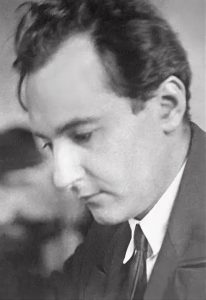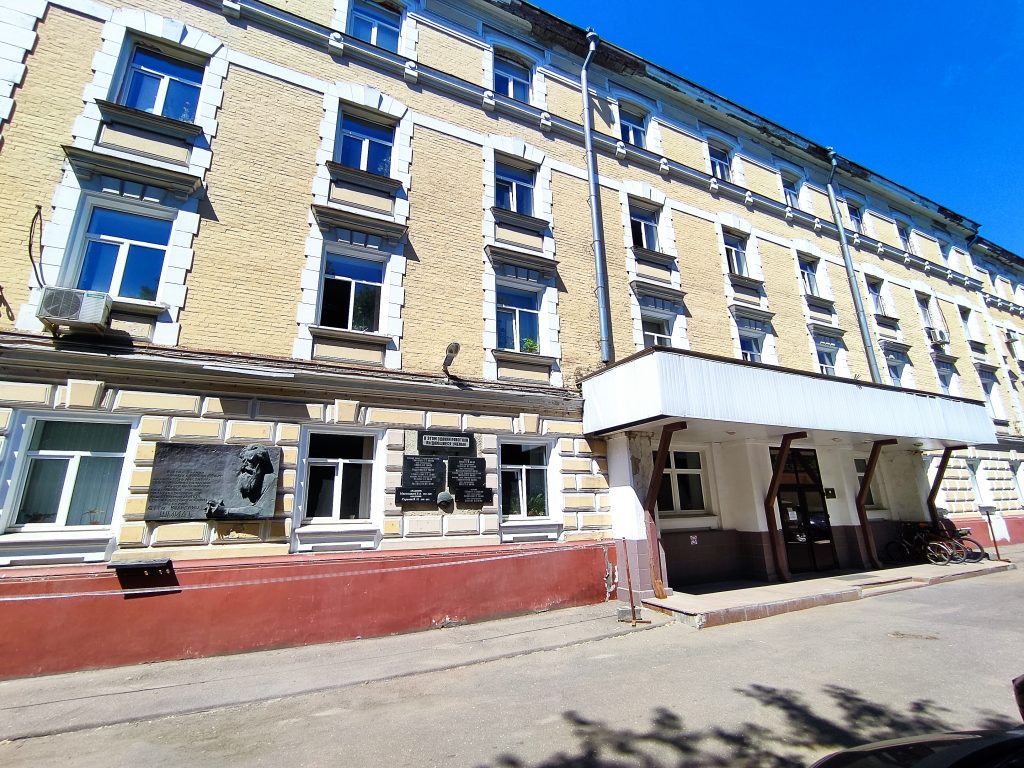Ilya Afanasyevich
Kibel
1904-1970

Ilya Afanasyevich Kibel was born on October 19, 1904 in Saratov, the Russian Empire. Ilya Afanasyevich (Efroimovich) Kibel is a Soviet mathematician, hydro—mechanic and meteorologist. He was a corresponding member of the USSR Academy of Sciences. I.A. Kibel is one of the largest scientists in the USSR in the field of theoretical hydromechanics. He laid the foundations of hydrodynamic methods of weather forecasting. I.A. Kibel, the first using the hypothesis of geostrophy and introducing a small parameter, later named after him, applied the equations of hydrothermodynamics for weather forecasting, found a way to use the complete non-geostrophic equations of hydrothermodynamics, set the task of forecasting local meteorological phenomena based on non-hydrostatic equations. No less important is the fact that I.A. Kibel was the organizer of the work on the application of hydrodynamic methods in operational prognostic activity. In 1940, I.A. Kibel`s work «Application to Meteorology of Baroclinic fluid Mechanics Equations» was awarded the Stalin (State) Prize for a great contribution to the development of hydrodynamic methods of short-term weather forecasting. I.A. Kibel was the initiator of the use of computers for forecasting meteorological elements. The first technological system of operational numerical forecasting was implemented on the computer «Weather», M-20, M-220, M-222, «Spring», BESM-6. He was awarded the Orders of Lenin, the Red Banner of Labor, the Red Banner of Labor and other awards.
Grigory Alexandrovich
Gamburtsev
1903-1955

Grigory Alexandrovich Gamburtsev was born on March 23, 1903 in St. Petersburg in a family of hereditary military men. In 1926, Gamburtsev graduated from the Physics and Mathematics Faculty of Moscow University. Simultaneously with his studies, he was an employee of the Institute of Physics and Biogeophysics – in 1923-1926 he worked in a Special Commission on the KMA. In 1932-1937, Gamburtsev was in charge of the seismic laboratory of Petroleum Geological Exploration Institute – NGRI and as a part of the All-Union Office of Geophysical Exploration (VKGR). In 1938, he moved to the academy created in the same year by academician Otto Yulievich Schmidt Institute of Theoretical Geophysics of the USSR Academy of Sciences (since 1946 – Geophysical Institute (GEOFIAN)), where until 1948 he headed the Department of Geophysical methods of Exploration, he was the deputy director. He carried out scientific and methodological guidance of seismic and gravimetric works of various geological exploration organizations. During the war (1941-1943), he was the head of the East European Expedition of the USSR Academy of Sciences: he supervised geophysical work in Bashkiria, in the oil-bearing area of the «Second Baku». In 1943-1944, he headed seismic exploration in Azerbaijan on the Absheron. In 1945, he was preparing to create a raw material base for a new branch — the USSR nuclear industry. He was an organizer and then the head of the Geophysical Complex expedition engaged in exploration of uranium ores (1946-1951). On the initiative of G. A. Gamburtsev in 1949, the Council on Seismology was established at the Presidium of the USSR Academy of Sciences, of which he was the chairman until the end of his life. He developed a new method of geophysical prospecting for mineral deposits (KMPV — the correlation method of refracted waves), he was the first to propose the use of the method of refracted waves to study the structure of the entire Earth’s crust, and created the GSZ method (deep seismic sounding (1948)). Since 1946, Gamburtsev began experimental research on the development of high-frequency seismic exploration, initiated work on the creation of a method of vertical seismic profiling. He was awarded the Orders of Lenin, the Red Banner of Labor, the Stalin Prize and other awards.
Vsevolod Vladimirovich
Fedynsky
1908-1978

Vsevolod Vladimirovich Fedynsky was a Soviet astronomer and geophysicist, the Director (NIIPG) of the GSST (1944), a Professor at Moscow State University (1950, 1977), the executive editor of the VAGO bulletin, the editor-in-chief of the journal “Astronomical Bulletin” (1967), a corresponding member of the USSR Academy of Sciences (1968). Vsevolod Vladimirovich Fedynsky was born on May 1, 1908 in the village of Velikaya Bagachka (now the Poltava region, Ukraine). In 1930 he graduated from the Physics and Mathematics Faculty of Lomonosov Moscow State University with a degree in astronomy and gravimetry. In 1930-1944 he worked in geophysical exploration organizations of the oil industry, in 1944-1952 — in the All-Union Research Institute of Geophysical Methods of Exploration. In 1952-1957 he was the Head of geophysical works in the oil industry, since 1957 he worked in the Ministry of Geology of the USSR. He had major works in the field of exploration geophysics, gravimetry, Earth physics and meteor astronomy. He contributed to the wide development of complex geophysical research, organized detailed geophysical surveys to search for mineral deposits, participated in the formulation and scientific justification of the problem of drilling ultra-deep wells. He was engaged in gravimetric instrumentation. In 1944 he invented the gravimeter-altimeter. In 1934, under his leadership, the first meteor spectrum in the USSR was obtained. He received data on the deceleration of meteors in the atmosphere and on the temperature gradient in the atmosphere at altitudes of 50-80 km. In 1947, in a pioneering work on the destructive effect of meteorite impacts, together with K.P. Stanyukovich, he predicted the existence of meteorite craters on Mars, Mercury, asteroids and satellites of planets. He was awarded the Orders of the Red Banner of Labor, the Badge of Honor, the Medal for Valiant Labor in the Great Patriotic War, the Stalin Prize of the third degree – for the development and implementation of spring gravimeters for geophysical exploration and other awards.
Address: Moscow, Bolshaya Gruzinskaya str., 10, p. 1

